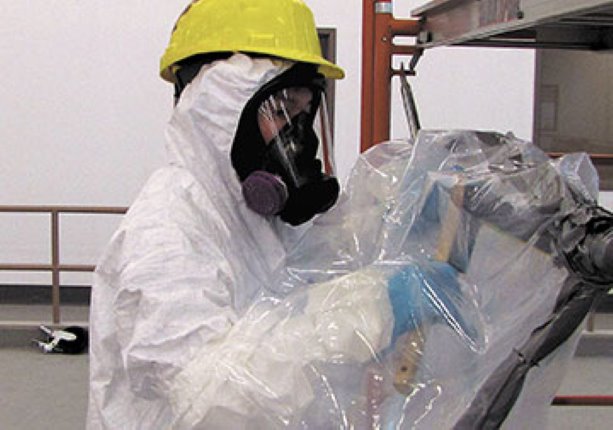Anthony Simone knows all about infection control methods for construction on hospital renovation sites.
That is because the drywall instructor at the Toronto-based Interior Finishing Systems Training Centre (IFSTC) took a comprehensive course on the subject in Las Vegas and hopes to pass on what he’s learned through a course organized for contractors in Toronto.
With infections in hospitals killing thousands of people across North America — and onsite construction seen as a potential source of infection — his objective makes sense.
The course in Las Vegas — Construction ICRA (infection control risk assessment) Best Practices in Healthcare Construction — covers methods for managing and containing pathogens, controlling airflow, protecting patients, and productively performing work without disrupting hospital operations.
It was designed in a partnership of the Mayo Clinic in Minnesota and the U.S.-based Carpenters International Training Fund.
Simone and two instructors from Carpenters’ Local 27 in Toronto took the course.
“It taught us how to build temporary partitions and to apply negative air, based on ICRA guidelines,” says Simone.
General contractors are usually responsible for containment at major hospital renovations in Ontario but drywall contractors can take the lead on small remodeling jobs, he points out.
The level of containment often depends on the location of the renovation in the hospital. A maternity ward might not require as stringent containment as an intensive-care ward, says Simone.
U.S. statistics indicate that mould has been a big problem in hospitals with as many as 90,000 deaths related to it, he points out.
“In our world, we find sometimes that there will be mould on the backs of ceiling tiles resulting from condensation on pipes dripping onto them. When the air from the ceiling space is being drawn into the cold air return plenum, that mould is circulated into the room below.”
Portable containment equipment allows builders to enclose small ceiling areas (such as six feet square) and replace those tiles without building a complete barrier for a room, he says.
While there hasn’t been strong interest from local drywall contractors to attend a course on containment methods at the IFSTC in Toronto, there is no getting around the fact that hospitals are increasingly demanding high standards of infection control, he says.
And the day may come when containment methods are written into building codes, Simone says. “It is not something that contractors can take lightly.”



Recent Comments
comments for this post are closed